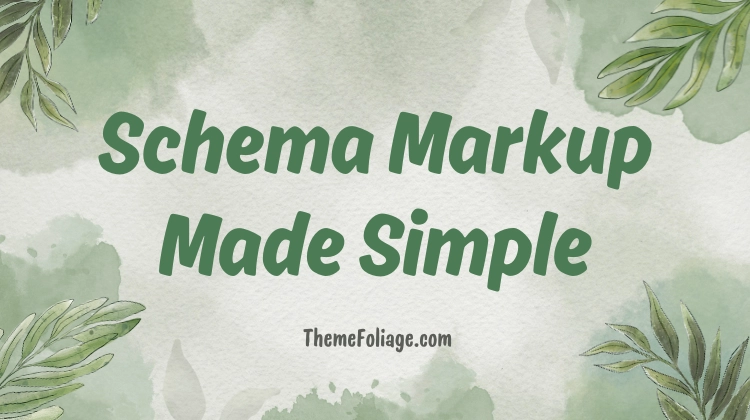Structured data is one of the most powerful yet underused tools in modern SEO. In 2025, schema markup isn’t just an enhancement; it’s a ranking multiplier.
By helping Google understand your content contextually, schema increases visibility through rich results, FAQs, product highlights, and more. This guide breaks down the essential schema types that truly move the needle for your SEO performance.
What is schema markup?
Schema markup is a type of structured data added to your website’s HTML to help search engines interpret your content accurately. It uses JSON-LD (JavaScript Object Notation for Linked Data), a format recommended by Google, to define your page type and attributes.
When implemented correctly, schema can help your pages appear as rich snippets, enhanced listings with star ratings, FAQs, images, and more.
Why schema markup matters for SEO in 2025
Google’s focus on user experience means clarity and context are vital. Schema markup gives search engines the metadata they need to confidently present your content in visually enhanced formats.
- Improves click-through rate (CTR) by enhancing listings visually.
- Increases content discoverability for voice and AI search.
- Boosts trust by validating the type and quality of your content.
- Supports eligibility for Google’s advanced features like FAQ, Product, and Review snippets.
1. Article schema
Use Article schema for news, blog, or editorial content. It helps Google display your title, author, date, and images properly in search results.
- Ideal for blogs, news sites, and online magazines.
- Add
author,headline, andimagefields for maximum impact. - Combine with
Personschema for detailed author profiles.
2. FAQ schema
FAQPage schema enables your page to appear with collapsible Q&A sections in Google results. This not only boosts CTR, but also increases on-SERP real estate.
- Mark up multiple questions and answers per page.
- Ensure content exactly matches visible on-page text.
- Avoid duplicate or misleading questions, Google may penalise spammy usage.
3. How-to schema
HowTo schema is perfect for instructional content. It allows your guides to appear with step-by-step instructions, images, and time estimates directly in search results.
- Use for DIY, tutorials, or technical walkthroughs.
- Add fields for
step,image, andestimatedCost. - Combine with
VideoObjectfor multimedia guides.
4. Product schema
Product schema helps e-commerce sites display product details, pricing, availability, and reviews directly in SERPs.
- Essential for retail and affiliate websites.
- Add
name,brand,aggregateRating, andoffers. - Supports inclusion in Google Shopping and image-rich snippets.
5. Review schema
Review and AggregateRating schemas enable star ratings and user feedback to appear beside listings. They’re a powerful trust booster.
- Use only for genuine reviews (Google actively validates these).
- Mark up both individual and aggregate ratings.
- Ensure transparency, avoid marking up self-serving testimonials.
6. Organisation and LocalBusiness schema
Google uses this schema to confirm brand details and connect knowledge panels, local listings, and contact information.
- Add
name,logo,address, andcontactPoint. - Include
sameAslinks to official social profiles. - Use
LocalBusinessschema for branches or service areas.
7. VideoObject schema
VideoObject schema helps videos appear in search and Discover results. It’s crucial for YouTube or embedded video content.
- Add fields like
name,description,thumbnailUrl, anduploadDate. - Use timestamps to enhance key moments.
- Pair with
HowToorProductschema for multi-format visibility.
8. Event schema
Event schema enables event listings to appear in Google Search and Maps with details like date, location, and ticketing information.
- Add
startDate,endDate,location, andperformer. - Keep events up-to-date, outdated events can harm trust.
- Best for conferences, workshops, concerts, or local meetups.
9. Breadcrumb schema
BreadcrumbList schema enhances navigation trails in search snippets, helping users understand your site structure.
- Automatically generated by most WordPress SEO plugins.
- Ensure accurate page hierarchy (Home > Category > Post).
- Boosts click confidence and improves crawl efficiency.
10. Person schema
Person schema describes the author or key team members behind your site, which strengthens credibility and supports E-E-A-T signals.
- Include
name,jobTitle,image, andsameAsprofiles. - Link to LinkedIn, Twitter, or company profiles.
- Ideal for personal brands, authors, and thought leaders.
How to add schema markup on WordPress
Adding schema doesn’t require coding expertise. Most SEO plugins automate the process with user-friendly interfaces.
- Use plugins like Rank Math, Yoast SEO, or Schema Pro.
- Manually add JSON-LD code via your theme’s header or using a custom block.
- Validate every implementation using Google’s Rich Results Test.
Common schema markup mistakes
- Using schema types that don’t match visible content.
- Incorrect nesting or missing required properties.
- Over-optimising with duplicate or misleading markup.
Testing and validation
After implementation, testing is critical. Use the following tools to validate structured data:
- Google Rich Results Test
- Schema.org Validator
- Search Console → Enhancements → Rich Results Reports
Conclusion
Schema markup SEO in 2025 bridges human understanding and machine interpretation. By adding structured data to your website, you give search engines the context they need to reward your content with rich results and better rankings.
Start with key types, Article, FAQ, Product, and Organisation, and gradually expand as your content grows. The clearer your data, the stronger your visibility in search. You must read this article – E-E-A-T SEO and Trust Signals.



